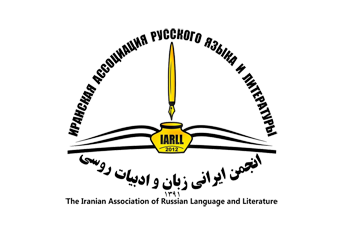QUESTIONS OF TRANSLATION AND COMMENTARY ON “A JOURNEY BEYOND THE THREE SEAS” BY AFANASY NIKITIN
DOI:
https://doi.org/10.61186/iarll.25.1Keywords:
Afanasy Nikitin, Travelogue, Old Rus', Trade RoutesAbstract
This article focuses on a crucial question for the accurate translation and commentary of "The Journey Beyond Three Seas" – determining the chronological framework of the travels described in the work. The article proposes a new dating for Afanasy Nikitin’s journey, placing it between 1467 and 1474. The traveler celebrated Easter on March 29, 1467 (Klin), April 17, 1468 (Chapakur), and April 2, 1469 (Hormuz). In April-May of that year, he crossed the Arabian Sea and by mid-September 1469, he reached Bidar. In March 1470, he embarked on a journey "towards Pervoti." In 1470-1471, while somewhere "near Pervoti," within the territory of pagan states, Afanasy could not observe the Holy Days, as he had lost track of the alignment of the current time with the Christian calendar. Afanasy celebrated Easter in 1472 and 1473 in Bidar and Gulbarga, respectively. He observed his last Easter during his journey home on April 10, 1474, in Muscat, and completed his life's journey under Smolensk in the winter of 1474/1475. The widespread popularity of "The Journey" in our time echoes the multilingual environment through which his path led. Afanasy passed through territories inhabited by East Slavic, Finno-Ugric, and Turkic peoples. Starting from the southwestern coast of the Caspian Sea, the traveler entered a different linguistic environment – the space of Iranian languages (Talysh, Gilaki, Mazandarani, Persian, etc.). It is possible that studying one of the Iranian languages delayed Afanasy on his journey between the Caspian and the Indian Ocean but later allowed him to successfully pass himself off as someone from the Khorasan region, where Persian was the most common language. Afanasy's route led from the ancient Russian principalities to the Kazan Khanate, the Great Horde, Shirvan, Gilan, and Mazandaran, and the Timurid Empire. In India, Afanasy visited the states of Gujarat, the Bahmani Sultanate, and the Vijayanagara Empire. On his return journey, he also visited the state of Ak Koyunlu, the Ottoman Empire, the Crimean Khanate, and the Grand Duchy of Lithuania. Many of the listed states were at war with each other during Afanasy Nikitin's travels, but wars, sooner or later, end in peace. The example of Afanasy Nikitin, who went through numerous trials and called for justice and peace in his work, remains important for his readers even today.
Extended abstract:
The article focuses on a crucial question for the accurate translation and commentary of Afanasy Nikitin's "The Journey Beyond Three Seas" – determining the chronological framework of the travels described in the work. The article proposes a new dating for Afanasy Nikitin’s journey, placing it between 1467 and 1474. The traveler celebrated Easter on March 29, 1467 (Klin), April 17, 1468 (Chapakur), and April 2, 1469 (Hormuz). In April-May of that year, he crossed the Arabian Sea and by mid-September 1469, he reached Bidar. In March 1470, he embarked on a journey "towards Pervoti." In 1470-1471, while somewhere "near Pervoti," within the territory of pagan states, Afanasy could not observe the Holy Days, as he had lost track of the alignment of the current time with the Christian calendar. Afanasy celebrated Easter in 1472 and 1473 in Bidar and Gulbarga, respectively. He observed his last Easter during his journey home on April 10, 1474, in Muscat, and completed his life's journey near Smolensk in the winter of 1474/1475.
First published in its original language in the early 19th century, Afanasy Nikitin's "The Journey Beyond Three Seas" has been repeatedly republished and translated (translations into at least 15 foreign languages are known: German, English, Czech, Polish, Hindi, Swedish, Italian, French, Spanish, Japanese, Danish, Turkish, Malayalam, Chinese, and Persian).
The widespread circulation of Afanasy's work in our time resonates with the multilingual environment through which his path led. Having begun his journey, most likely from Moscow in March 1467, Afanasy passed through territories inhabited by East Slavic, Finno-Ugric (Tver Karelians, Mari, Mordvins) and Turkic peoples (Volga Bulgars, Tatars, Nogais, Kalmyks, Kumyks, Kaisaks, Dagestanis, Turkmens, etc.). Starting from the southwestern coast of the Caspian Sea, the traveler entered a different linguistic environment – the space of Iranian languages (Talysh, Gilaki, Mazandarani, Persian, etc.). It is possible that studying one of the Iranian languages delayed Afanasy Nikitin on his journey between the Caspian and the Indian Ocean but later allowed him to successfully pass himself off as someone from the Khorasan region, where Persian was the most common language.
Afanasy's route led from the ancient Russian principalities to the lands of the disintegrated Golden Horde: the Kazan Khanate, the Great Horde, Shirvan, Gilan, and Mazandaran, and the Timurid Empire. In India Afanasy visited the states of Gujarat, the Bahmani Sultanate, and the Vijayanagara Empire. Finally, on his return journey, he also visited the state of Ak Koyunlu, the Ottoman Empire, the Crimean Khanate, and the Grand Duchy of Lithuania. Many of the listed states were at war with each other during Afanasy Nikitin's travels, but wars, sooner or later, always end in peace. The example of Afanasy Nikitin, who went through numerous trials and called for justice and peace in his work, remains important for his readers even today.
Downloads
Published
How to Cite
Issue
Section
License
Copyright (c) 2025 Issledovatel'skiy Zhurnal Russkogo Yazyka I Literatury

This work is licensed under a Creative Commons Attribution 4.0 International License.
![]()
"Creative Commons Attribution 4.0 International (CC-BY 4.0)"


